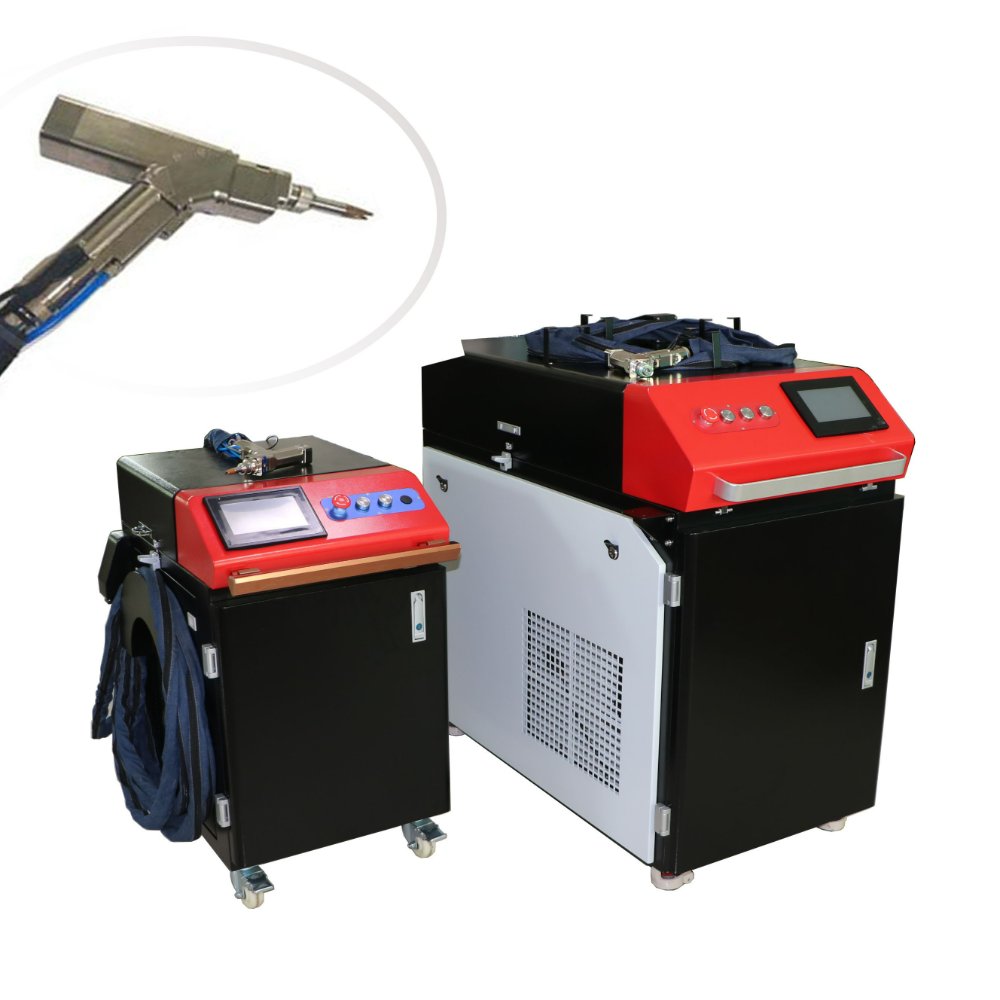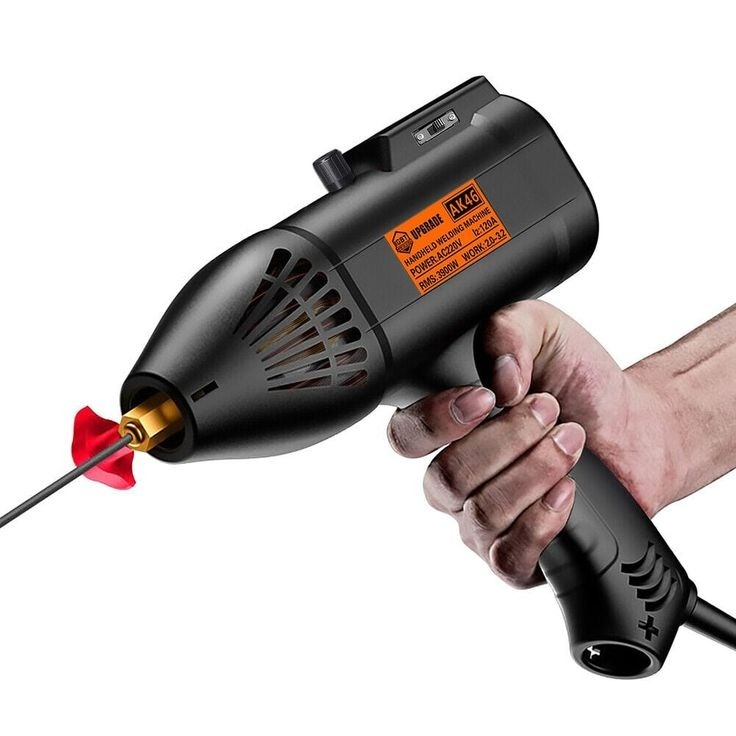Maximizing Efficiency with the Fiber Laser Welding Machine
Introduction to Fiber Laser Welding Technology
Fiber laser welding technology stands out in modern fabrication. It beams intense laser light through a fiber optic cable. The light then focuses on a point through a lens or a special nozzle. Here, the magic begins. The intense laser energy melts and fuses materials together. This creates strong, precise welds.
Fiber laser welding machines suit many industries. They handle metals and thermoplastics alike. Plus, they offer more control and precision than traditional welding methods. You benefit from high speeds and low heat input. These perks lead to less distortion of the pieces you’re working with.
The core element of this technology is the fiber laser itself. Fiber lasers use a solid gain medium, an optical fiber doped with rare-earth elements. When pumped with diode lasers, these fibers produce a powerful laser beam. The beam quality of fiber lasers is top-notch. It allows for fine, detailed welds that are crucial in intricate components.
Speed is a standout feature. Fiber laser welding moves fast, making it ideal for high-production environments. This speed doesn’t come at the cost of quality. Instead, it maintains consistency, even with complex shapes and materials.
Fiber laser welding machines are also known for their efficiency. They convert a high percentage of input energy into the laser beam. Minimal waste means cost savings and less environmental impact. This efficiency also leads to fewer stoppages for cooling, maximizing productivity.
As a blogger deeply immersed in the latest technology, the journey into fiber laser welding machines is an exciting one. Keep reading as we dive deeper into the key advantages this technology brings to modern manufacturing.
![]()
Key Advantages of Fiber Laser Welding
Fiber laser welding comes with numerous advantages that make it a preferred technology in various industries. Understanding these benefits will illustrate why this method stands out amidst other traditional and modern welding techniques.
Precision and Quality
The hallmark of fiber laser welding is the precision it offers. The narrow laser beam creates clean, detailed welds perfect for intricate parts. Manufacturers can expect consistency, especially in repeatable tasks.
High-Speed Operations
Speed is essential in production. Fiber laser welding operates at high rates. This means more work done in less time. It’s a boon for industries focusing on volume without compromising on weld quality.
Low Heat Input
Fiber lasers generate less heat compared to other methods. This translates to minimal warping of components. It’s ideal for delicate work where heat distortion can be a concern.
Energy Efficiency
These machines have excellent energy conversion rates. A substantial amount of energy transforms directly into laser power. You’ll see cost savings and reduced environmental impact as a result.
Flexibility Across Materials
Fiber laser welding isn’t just for metals. It skillfully joins thermoplastics too. This versatility allows for broader applications within different sectors.
Improved Safety
With contained laser beams and minimal heat spread outside the weld area, fiber laser welding enhances workplace safety. Less exposed heat means a lower risk of accidents or damage.
Lower Maintenance Costs
Regular maintenance for fiber laser welding machines is less intensive. Fewer mechanical parts to wear out means more uptime and lower ongoing costs.
By integrating a fiber laser welding machine into your production line, you’re choosing a technology that boosts efficiency, saves on operating costs, and ensures high-quality results.
![]()
Fiber Laser Welding Machine Components
When discussing fiber laser welding machines, understanding the core components is key. These elements work together to deliver the precision and efficiency we’ve talked about.
The Fiber Laser Source
The heart of the machine, the fiber laser source, generates the coherent light required for welding. It ensures a consistent, high-quality beam that can be precisely controlled.
Beam Delivery System
After creation, the beam travels through the fiber optic cable. The delivery system guides the laser to the exact spot needed for welding, with minimal losses.
Focusing Optics
At the end of its journey, focusing optics concentrate the laser beam onto a small area. This allows for meticulous work on the materials being welded.
Control System
A sophisticated control system manages the laser’s parameters. It adjusts the beam’s power, duration, and repetition rate to achieve the best welds.
Cooling System
To prevent overheating, a cooling system is essential. This component maintains optimal temperatures, ensuring the machine operates safely and efficiently.
Nozzle and Gas System
The nozzle directs the beam, while the gas system shields the weld area from contamination. These work together to create a clean weld environment.
Each part of a fiber laser welding machine plays a critical role in its overall performance. From the laser source to the nozzle, all contribute to the superior capabilities of fiber laser welding. With minimal moving parts, maintenance is eased, further highlighting the machine’s efficiency. For businesses looking to invest in welding technology, understanding these components allows for better decision-making and use of the machine.
Optimizing Fiber Laser Parameters for Improved Weld Quality
Optimizing fiber laser welding parameters is crucial for top-notch weld quality. Key parameters include power, speed, focus, and gas flow. Adjusting these settings can lead to better welds. This means more strength and cleaner joints. Here is how to fine-tune each parameter for improved results:
Laser Power
Too much power can damage materials. Not enough, and the weld may be weak. Find the right balance for a strong, clean weld.
Welding Speed
Match the speed to the task at hand. Quicker speeds can boost production. But be careful – too fast can lead to poor quality welds.
Focus Point
Precision is king with fiber lasers. Adjust the focus to create the right spot size. This affects the weld’s depth and quality.
Gas Flow
Shielding gas protects the weld from air. The right flow ensures a clean, oxidation-free joint. It’s essential for the best weld integrity.
Tweak these settings to get the best performance from your fiber laser welding machine. Regular testing helps find the sweet spot for different materials. Careful adjustment of these parameters ensures welds meet high standards in a variety of applications.
![]()
Applications of Fiber Laser Welding in Industry
Fiber laser welding machines have reshaped how industries handle joining tasks. Their precision, speed, and flexibility find use in many sectors. Here’s where they make a mark:
Automotive Manufacturing
The automotive industry requires durable welds for safety and longevity. Fiber laser welding machines meet these needs, ensuring cars and trucks are built to last.
Aerospace and Aviation
Precision is vital here. Fiber lasers deliver high-quality welds on critical aircraft components, where even a minor flaw can be catastrophic.
Medical Device Fabrication
Implants and surgical tools need perfect welds. Fiber lasers provide this level of detail, contributing to advancements in medical technology.
Electronics and Micro-welding
In electronics, tiny and precise joints are needed. Fiber laser welding allows for the small, accurate welds necessary on circuit boards and other electronic components.
Energy Sector
Whether it’s solar panels or fuel cells, the energy industry benefits from the efficiency of fiber laser welding machines for durable, high-quality production.
Shipbuilding
The strength and speed of fiber laser welding are ideal for constructing ships that withstand harsh sea conditions.
Jewelry Making
Artisans use fiber lasers for delicate welds on fine jewelry, combining precision with artistic craftsmanship.
Adopting fiber laser welding machines leads to higher productivity and reduced waste. Companies across these industries see improved results and cost savings. From delicate medical implants to robust ship hulls, the versatility of fiber laser welding is evident. Each application leverages the machine’s ability to produce consistent, high-quality welds. This technology is essential in sectors where precision and reliability are non-negotiable.
Maintenance and Safety Considerations for Fiber Laser Welding Machines
Proper maintenance and safety in using fiber laser welding machines cannot be overstated. These machines require specific attention to keep them in top shape and to ensure a safe working environment.
Routine Maintenance Is Key
Routine checks are crucial for smooth operation. Clean lenses and mirrors regularly to avoid any power loss. Check fiber optic cables for any signs of damage. Make sure cooling systems are fully functional to prevent overheating.
Adhere to Safety Standards
Always follow the safety standards set for laser welding. Use proper personal protective equipment (PPE). Make sure all operators are well-trained on the machine’s use.
Update Software Regularly
Keep the machine’s software up to date. Upgrades can enhance performance and introduce new safety features.
Handle Repair Needs Promptly
Address repair needs immediately to prevent further damage. Regular maintenance often catches small issues before they turn into big ones.
Ensure a Safe Workspace
Designate and maintain a clean, organized space for welding tasks. Clutter can cause accidents. A tidy workspace promotes safe operations.
Adhering to these maintenance and safety tips will extend the life of your fiber laser welding machine and create a safer environment for all. Proper care leads to fewer interruptions and a more effective production process.
Case Studies: Success Stories in Fiber Laser Welding
Fiber laser welding machines have revolutionized numerous industries. Here are some case studies showcasing their success:
Automotive Industry Breakthroughs
Leading car manufacturers have embraced fiber laser welding. It boosts their production rates and enhances vehicle safety. They achieve strong, durable welds in seconds. This pace is critical in meeting global demand.
Advancements in Aerospace
Aerospace firms rely on the precision of fiber laser welding. They create flawless joints on critical components. These high-quality welds ensure the safety of passengers and crew.
Medical Sector Improvements
The medical field has seen great strides with this technology. Producers of implants and tools now make more reliable products. They benefit from the laser’s ability to join small, intricate parts.
Electronics Manufacturing Efficiency
Electronics companies have improved their assembly processes. They use fiber lasers for tiny, precise welds. This has led to higher quality circuits and devices.
Impact on Energy Projects
In the energy sector, fiber laser welding has been a game changer. Manufacturers of solar panels and fuel cells have greatly improved their output. They achieve robust, weather-resistant welds efficiently.
Shipbuilding Transformations
Shipbuilders have found fiber lasers to be incredibly beneficial. They construct vessels faster and with stronger joints. This ensures the ships’ longevity and performance in marine conditions.
Fine Jewelry Precision
Jewelers have adopted fiber laser welding for its finesse. They create delicate, detailed designs on precious metals. This allows for a combination of beauty and durability.
These success stories highlight the fiber laser welding machine’s versatility. They also demonstrate how industries achieve better products with less waste and cost. These case studies prove that investing in fiber laser technology pays off in multiple ways.
Future Trends in Fiber Laser Welding Technologies
Looking ahead, the fiber laser welding machine industry is set to evolve. Here are some anticipated trends:
Smarter Control Systems
Advancements in control systems will make machines smarter. Expect more automation and precision in welding processes.
Enhanced Beam Quality
Researchers are working on improving laser beam quality. This will lead to even finer, more precise welds.
Green Technology
Sustainability will be a big focus. Machines will become more energy-efficient, with lower emissions.
Integration with Robotics
Robots will handle more welding tasks. They’ll work alongside fiber lasers for increased speed and accuracy.
Advanced Materials Compatibility
Fiber lasers will weld a wider range of materials. Innovations will allow for joining new, exotic alloys and composites.
Compact Machine Designs
Machines will get smaller, taking up less space. Smaller designs will still deliver powerful, high-quality welds.
Improved Operator Training
Emphasis on training will grow. Better-trained operators will be able to exploit the full potential of the technology.
Greater Connectivity
Connectivity will improve with the Internet of Things (IoT). Welding data will be more accessible for analysis and optimization.
These trends will shape the future of fabricating industries. Fiber laser welding machines will become more prevalent, efficient, and essential in high-quality production.

